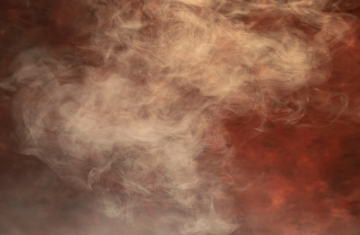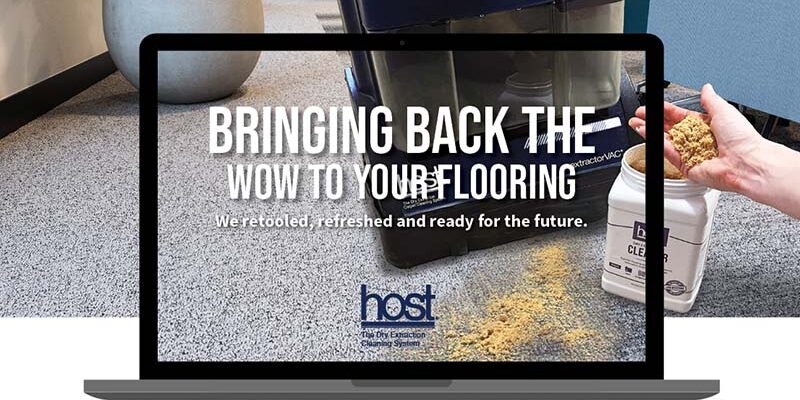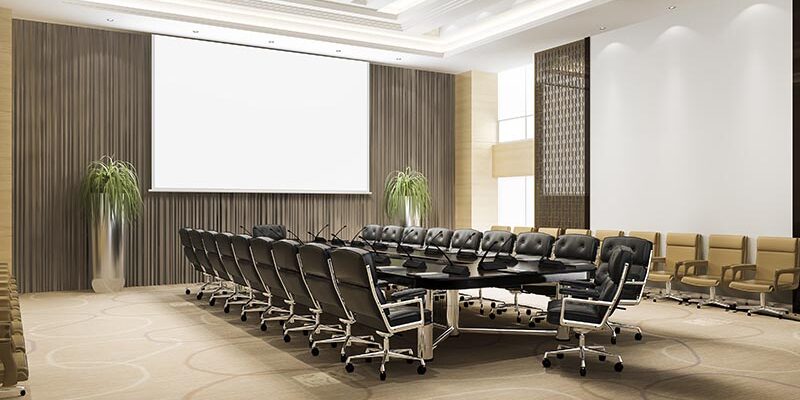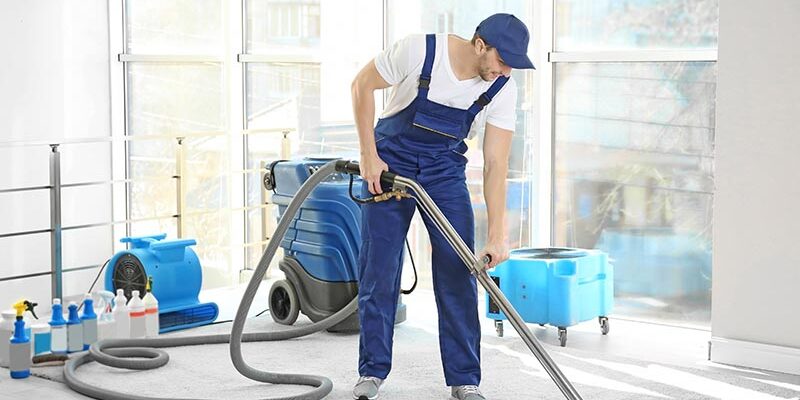Using Heat without Getting Burned

There’s more than one way to get burned when using heating equipment to restore structures from water damage. Regardless of how effective a drying system may be, the safety, liability and cost-effectiveness of the method is critical.
The earliest recorded methods for drying utilized heat as the primary method for driving moisture out of materials. Today it remains one of the most common — from the everyday clothes dryer to massive industrial processing plants. Although every drying application has distinct differences, there’s no arguing that heat is an important element in any drying equation.
So how can the professional restorer leverage this important component of drying, while properly addressing the concerns it can bring? Let’s look at each, and discuss a practical approach to using heat without getting burned.
Safety
There are specific issues related to safety depending upon the type of heating system used. Electric heating sources often have exceptionally high amperage requirements. Accessing the power required can result in specific electrical safety concerns.
Adapting plugs to fit 230v power outlets, establishing proper grounding, drawing power from electrical panels — all very scary if not done properly. Further, the demand for power can often significantly limit the restorer’s ability to use power for other drying resources, like dehumidification and air movement.
Fossil fuel “fired” units are the alternative. There are two primary types of fired heating systems: direct and indirect. Both satisfy the electrical challenges, as they generate heat from combustion. However, they bring a different set of challenges.
Combustion of fossil fuels can result in the production of carbon monoxide. If this gas is allowed to build within the structure, the result can be deadly. Direct-fired systems do not separate the byproducts of combustion from the heated air stream. Indirect-fired systems, however, vent these byproducts with a separate air stream for burning versus heating the structure. Provided the system is set up properly outside, only clean air is delivered to the occupied space.
All heat sources also increase the risk of hot surfaces. When these surfaces are accessible to occupants, they may also constitute a safety concern. Utilizing equipment that properly shields these hot surfaces from access is important (there are several existing systems where this is a legitimate concern).
Summary: Rely on indirect-fired systems when additional heat is a significant component of your drying plan.
Liability
Excessive heat, equipment failure and potential damage are all concerns the restorer must address when deploying heating equipment.
Precise control of the net temperature in the space is important for many reasons. At no time should the general temperature throughout a drying project exceed 105 degrees Fahrenheit or 40.6 degrees Celsius.
There are many reasons for this critical temperature limit. For starters, many of the electrical motors used in airmovers are rated up to this temperature. Exceed it, and you will dramatically shorten the expected life of the motor.
Equipment failure is another major liability concern. Proper safety ratings (i.e., ETL, UL, CUL, CSA) for heating equipment is a must. There’s more than one horror story circling our industry in which electric heating equipment has failed catastrophically.
Keeping good records is also important when using heating equipment. Potential damages from high temperatures and elevated humidity are a frequent ground for complaints from customers. Records should include the temperatures and humidity throughout the space during monitoring visits, verifying the environmental conditions did not facilitate damage. Here again, preventing and documenting temperatures below 105 degrees Fahrenheit is highly recommended.
Summary: Prevent structures from being heated above 105 degrees Fahrenheit/ 40.6 degrees Celsius, use safety-listed equipment and document your environmental conditions on each visit to the jobsite.
Cost-effectiveness
There are several methods for creating an efficient drying environment. Each provides an effective approach in the right circumstance. Utilizing supplemental heat becomes especially cost-effective in the following scenarios:
Dense or multi-layer assemblies:When removing water from built-up assemblies or dense materials that naturally resist water movement, focused or contained supplemental heat can be highly cost-effective. This is especially true when the construction creates air channels or pockets internally, such as with a wall cavity. In this instance, less heat can be used while still creating a very warm cavity.
Generally, this type of heat is easily generated using high-pressure blowers or mechanical dehumidifiers. Air from these devices delivered directly to a small air space can result in ideal temperatures and increase evaporation and vapor movement.
Cold outdoor temperatures:When outdoor conditions will remain below 50 degrees Fahrenheit or 10 degrees Celsius, the maximum outdoor humidity will be adequate for most structural drying applications. In other words, you really don’t need to dry air — you just need to borrow it from outside and correct the temperature.
In these cases, supplemental heat really becomes a stellar performer. Especially when outdoor conditions are even cooler, the potential cost-benefit of a true heat-and-air-exchange drying system is substantial. A single indirect-fired furnace can deliver the drying power of six or more large LGR dehumidifiers in a cold climate.
Summary: Leverage heat to maximize drying when presented with cold outdoor conditions or specific challenging materials and assemblies.
Other considerations
In addition to understanding why and when to use heat, there are also considerations for”how” that can be just as important. When using an overall heat drying system especially, specific setup and adjustment steps should be used.
For starters, consider the effects of pressurization when adding air to or removing air from a structure on a large scale. When hot, humid air is present in the space, a positive pressure will force wet air into unaffected space where it will cool and lead to secondary damage. If there are existing combustion appliances operating in the space, negatively pressurizing the structure can cause deadly gas to backdraft into the occupied area — potentially creating a deadly environment.
For efficiency, it is usually best to begin an overall heat-and-air-exchange drying system under a negative pressure. This ensures that the initial high humidity from evaporation is not forced into unaffected areas. As the humidity is controlled, however, the project can be shifted to neutral or positive pressure.
The decision should be based squarely on the temperature of unaffected materials and the dew point of the air in the space.
Monitoring methods are another consideration. When using an overall heat drying method, you should analyze the effectiveness of the system differently than for traditional drying methods. Traditionally, we evaluate the reduction of humidity as an indication of overall progress from a drying system. When using an air exchange with outside air, however, it is the rise in humidity that indicates how effective the system is.
Consider air as a sponge. The effort in air exchange is to “load up” air with moisture as it passes through the structure. The difference in humidity of the air entering the building versus the air exhausted should be the focus.
Wetter air out indicates water is being removed from the space.
Balance this with the need to keep the humidity low in the environment. High humidity exhaust indicates good water removal, but too high indicates not enough air exchange. Keep the exhausted air at a dew point below the temperature of indoor materials.
| Increasing Air Exchange |
|---|
| Negative Pressure: If your goal is to be negatively pressurized, increase the exhaust air to achieve greater rates of air exchange.
Neutral Pressure: If your goal is neutral, you must increase both the air supplied to the structure and the exhaust, ensuring they are relatively equal. Positive Pressure: To maintain positive pressure, increase the air supplied to the space to increase air exchanges. |
If you’re not accustomed to using dew point, you can get a similar result by ensuring the exhausted air is no wetter than what the outdoor air would be at 100 percent relative humidity. If it is, increase your air exchange rate.
Finally, remember your air exchange rate is controlled by either the amount of air you’re adding or the amount you are removing — whichever is greater.
To increase air exchange, you must increase either or both.
Evaluate the net change in humidity inside and at your exhaust to determine if the air exchange rate is ideal. And watch your temperature — more exchange will likely mean a cooler temperature if your heat source isn’t properly sized.
Summary: Pay attention to your pressurization, especially when combustion appliances are present in the space. Tune your rate of air exchange to ensure that you keep the humidity under control, while still maintaining a warm temperature.
In conclusion
Supplemental heat can be highly advantageous especially in specific conditions. Using it properly requires careful equipment selection, regular monitoring and adjustment as the project progresses. Temperatures should be maintained below 105 degrees Fahrenheit/ 40.6 degrees Celsius, and humidity should remain below conditions that would support damage on cooler, unaffected materials. Be mindful of the pressure on the overall space when using heat in conjunction with air exchange — determine the appropriate pressure and adjust your system accordingly.
Brandon Burton is the Technical Director for Legend Brands, and works to support rapidly developing technology and industry practices to promote the restoration industry’s continued growth and improvement. Brandon is an approved IICRC instructor in the categories of Applied Structural Drying (ASD) and Water Damage Restoration (WRT). He has trained more than 4,000 water damage restoration professionals in the principles of drying. He is also a published author in the field. He has served as a Chapter Chair and editor for the ANSI/IICRC S500 standard committee and is a past member of the RIA (ASCR) Restoration council. Brandon has served the cleaning and restoration industry since 1995.You can contact him at [email protected].












